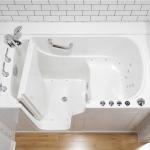Why Caregivers and Their Loved Ones Should Receive Training on the Installation and Use of Assistive Equipment
You researched multiple sellers and identified one that offers high-quality assistive devices at reasonable prices. The next step is making sure you install the devices correctly and receive proper training on how to use them. After all, the whole point of getting the equipment is to improve the quality of life of your loved one who are struggling with mobility issues.
Here are a few helpful tips.
- If you’re in doubt, hire a professional
Skilled as you may be at DIY projects, installation of mobility devices for disabled loved ones is best left to professionals who have the right knowledge and tools. A professional is likely to do a better job than you at adding a wheelchair ramp or installing a stair lift.
- A disabled person probably can’t install the equipment
You might purchase the equipment and have it delivered to the home of the disabled person. Keep in mind that, due to their limited mobility, the disabled person likely won’t be able to install the assistive equipment themselves. If they live with a caregiver, the caregiver may also not have the knowledge or the tools for installing the equipment. Make arrangements for the equipment to be installed.
- Hire a professional that specializes in adaptive and assistive equipment
Even as you consider hiring a professional to install the equipment, make sure that they are specifically qualified to install assistive or adaptive equipment. Hiring someone who has experience installing the specific equipment you’ve bought ensures that the installation is done properly.
- Get some training
If you decide to install the assistive equipment yourself, make sure you get the required training. The installation process of some equipment is not intuitive and you may damage the equipment if you attempt to install it without the necessary training. It’s also advisable to have a medical care professional train your loved one on using the assistive equipment for maximum comfort and utility.
- Familiarize yourself with the maintenance routines
Take time to learn the maintenance and adjustment schedules for the assistive equipment. It’s a good idea to be present when it is being set up. That way, if the needs your disabled loved one change, you more likely to know what adjustments are required and how to make them. Adjustments may be as simple as adjusting the height of a wheelchair or as complex as installing new software.
Buy assistive equipment from a recognized provider
Well-established and highly reputed providers of assistive or adaptive equipment for the disabled are likely to include offer training on the installation of their equipment. Even if they don’t offer personal training, they offer easy-to-understand instructional material such as tutorials for assistance. To find a reliable provider, research carefully and compare the review of a variety of providers before settling on one.
Proper installation of the equipment and adequate training for the caregiver and the disabled person are all important for ensuring that your loved one gets the most out of the assistive equipment to help them lead to meaningful life.
More to Read:
Previous Posts:
Next Posts:




